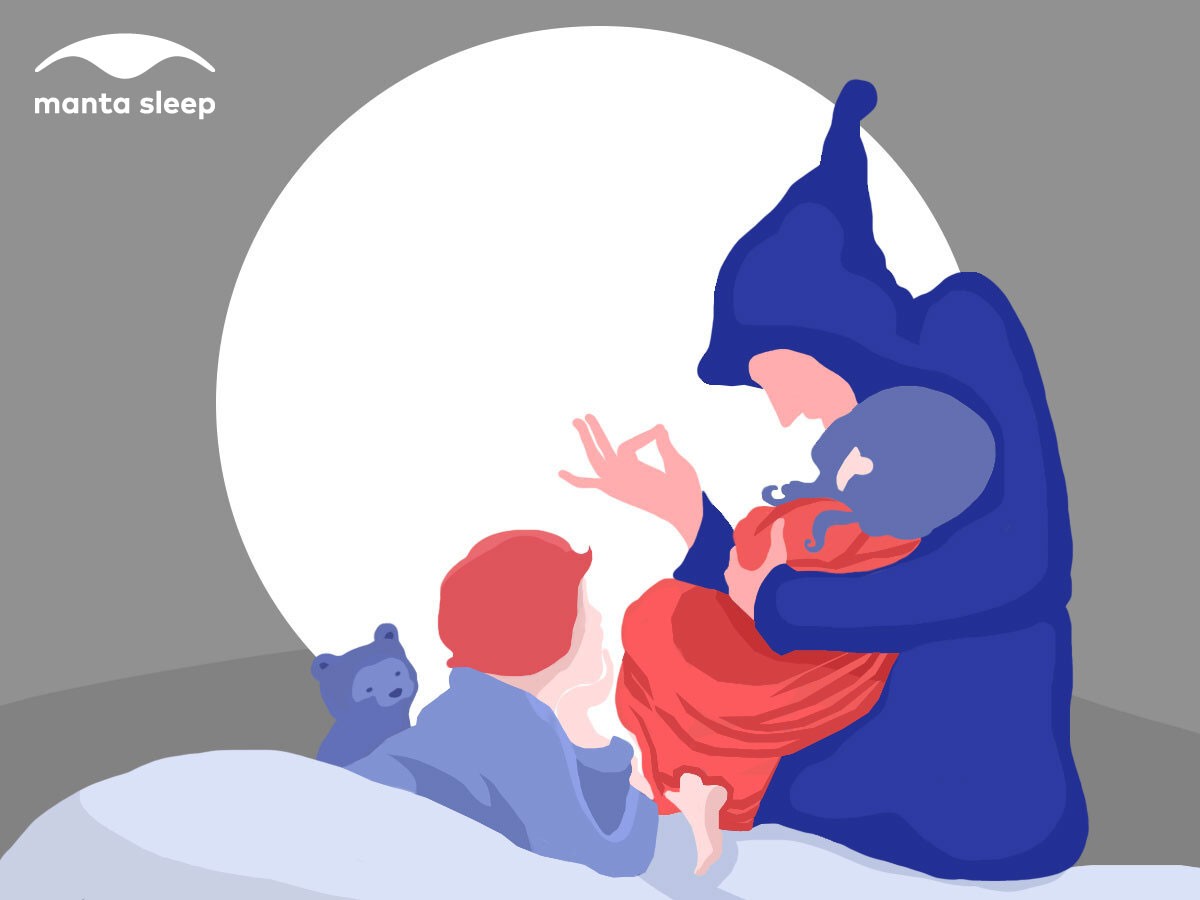Sleeping With the Sandman: A Brief History — Plus Your Path to More Vivid Dreams
He’s been written about for over two hundred years. He’s been sung about in nursery rhymes and by performers ranging from The Chordettes to Enya to Metallica. He’s been memorialized on canvas by Salvador Dalí. He’s even got an upcoming Netflix deal.
It’s safe to say that the Sandman is deeply woven into our culture.
But what are the origins of this elusive figure who’s been with us for so long? (And how can you bribe him to supply you with the best dreams?) Read on to find out.
A Brief History of the Sandman
Conveniently representing both the personification of drifting off to sleep and a fanciful explanation for eye grit, the Sandman’s first recorded appearance in mainstream media is in 1816’s Der Sandmann.
In this short story by German author E.T.A. Hoffmann, the Sandman was a sinister figure, stealing the eyes of children who wouldn’t go to bed and feeding them to his own children (who lived, of course, on the moon). You’d be forgiven for noting that the Sandman’s debut didn’t paint him in the best light.
In 1841, Hans Christian Anderson introduced a much more family-friendly Sandman into literature, as master storyteller Ole Lukøje (Ole Close-Eye). In this version, the nighttime visitor tosses sand in the eyes of children as a distraction, then sneaks in and lulls them to sleep.
Still kind of creepy, but at least there’s no eye-stealing going on.
Metallica’s contribution and a few bad movies notwithstanding, modern history tends to paint the Sandman with a much kinder brush.
For the past few decades, his most notorious appearance has been as the protagonist of Neil Gaiman’s dark urban fantasy DC series Sandman, the source material of the upcoming Netflix series mentioned above.
The Sandman and You: The Path to More Vivid Dreams
Now that you know a little bit about his origins, let’s get down to business: how can you bribe the Sandman to bring you the best dreams? You can also explore ways to remember your dreams, once they become a pro dreamer.
Here are some steps you can take to promote top-quality surrealism, courtesy of Der Sandmann himself:
📔 Keep a dream journal. As you begin to notice the patterns and locations that recur, your dreams will begin to take on a new level of intensity.
🛌 According to the American Psychiatric Association, sleep position can also play a role in how you dream. Snoring can interrupt dreams, so sleeping on your back puts you at a disadvantage. Stomach sleepers report the most vivid dreams, and right-side sleepers have fewer nightmares than those who sleep on their left.
🧘 A brief meditation of 5 - 10 minutes at bedtime can clear the mind of negative thoughts, which is important because a calmer mind leads to better dream recall in the morning.
💤 Try lucid dreaming. It’s not just for controlling your dreamscape — it’s also a great practice for remembering the details of your dreams.
🍌 Hunger while you sleep can disrupt dreaming, so have a light snack before bed — nuts or a banana are ideal.
🌹 Aromas like rose, lilac and lavender can subliminally trigger a more positive emotional state, leading to better dreams.
🐟 One study has linked vitamin B6 to the ability to recall dreams. Fish, liver, poultry, soy, starchy vegetables and non-citrus fruits are all great natural sources.
💭 Your intention also plays a role. Your thought processes just prior to sleep have an influence on what you dream, so as you drift off, tell yourself that you will have good dreams.
Armed with these tips, may your visits from the Sandman be frequent, your dreams pleasant and your slumber restful. (And may he leave your children’s eyes intact.)











































